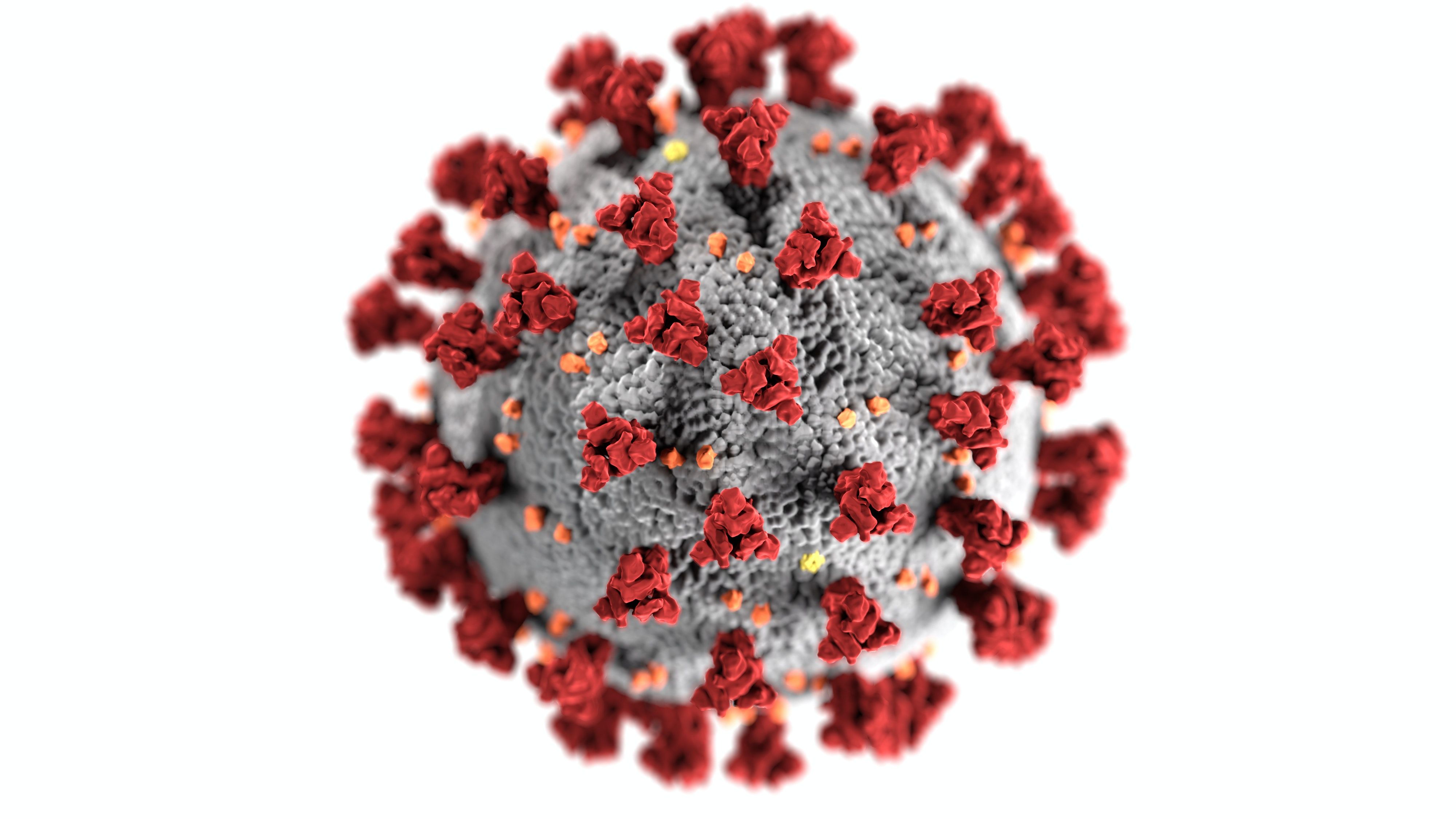Article
COVID-19 Stay-at-Home Measures More Impactful for T2D than T1D, Study Finds
Author(s):
An analysis of more than 4000 people from a university hospital in Japan details the impact of the COVID-19 pandemic on glycemic control and lipid profiles among people with diabetes.
Image of COVID-19 Spike Protein
Credit: Center for Disease Control's Public Health Image Library

More than 3 years into the COVID-19 pandemic, new data from investigators at the University of Tokyo is shedding light on the impact of the early pandemic and stay-at-home measures on glycemic control among people with type 1 and type 2 diabetes.
A retrospective cohort analysis comparing glycemic control and lipid profile during pre-COVID and COVID-19 periods, results of the study demonstrate the number of people receiving treatment dropped by 10% and significant changes were observed in regard to HbA1c, total cholesterol, and triglyceride levels, but notable differences based on diabetes status were highlighted by investigators.1
“We found that in people with diabetes mellitus, both the glycemic control state and the lipid profile were significantly worse during the COVID-19 period. In particular, the HbA1c, [total cholesterol], and [triglyceride] levels were statistically significantly elevated in people with type 2 diabetes mellitus rather than in those with type 1 diabetes mellitus,” wrote investigators. “These results suggest that COVID-19 and the measures enforced to prevent its spread had a negative impact on the glycemic and lipid control states in people with diabetes mellitus.”
The COVID-19 pandemic has gripped the public’s attention since early 2020 and, during the past 3 years, has brought attention to potential increased risk of disease severity associated with multiple different chronic conditions. Among the most spotlighted of these conditions is diabetes, which has received attention for its potential association with risk of contracting COVID-19, disease severity, and mortality.
A recent systematic review and meta-analysis from a team at the China-Australia Joint Research Center for Infectious Diseases published in Diabetes Care offered an overview of the association between COVID-19 severity and diabetes prevalence. Results of the study, which included data from more than 29 million individuals diagnosed with COVID-19, indicates diabetes contributed to 9.5% of severe COVID-19 cases and 16.8% of deaths.2
In the current study, a team led by Toshimasa Yamauchi, of the University of Tokyo in Japan, sought to evaluate the impact of the pandemic and preventive measures on the glycemic and lipid control in people with diabetes. To do so, investigators designed their analyses as a retrospective cohort study of data collected from within the University of Tokyo Hospital from April 2019-March 2021.1
For the purpose of analysis, data from the period lasting April 2019-March 2020 was classified as the pre-COVID-19 period and the period lasting from April 2020-March 2021 was classified as the COVID-19 period. Investigators noted these periods were further divided into 4 quarter for additional analysis.1
A total of 4247 participants were identified for inclusion in the study. The overall study cohort had a mean age of 67.21 (SD, 12.32) years, 65.3% were men, 89.0% had type 2 diabetes, and 4.9% had type 1 diabetes.1
Upon analysis, investigators found 3465 people with diabetes mellitus were receiving treatment in the first quarter of the COVID-19 period relative to the pre-COVID-19 period, which investigators pointed out was a 10.4% difference. Further analysis indicated the annual mean HbA1c level was significantly higher in the COVID-19 period (7.1% [SD, 0.01] vs 7.15% [SD, 0.01]; P <.001). Additionally, the annual mean total cholesterol (185.51 [SD, 0.51] mg/dL vs 186.09 [SD, 0.53] mg/dL; P <.001) and triglyceride (145.21 [SD, 1.54] mg/dL vs 146.16 [SD, 1.59] mg/dL; P=.008) levels were significantly higher in the COVID-19 period.1
However, investigators pointed out subgroup analysis according to type of diabetes suggestedthere were no significant differences in the glycemic control or annual medication between the two periods in people with type 1 diabetes mellitus. Investigators also called attention to asignificant increase in the percentage of prescriptions for glinides, biguanides, SGLT2 inhibitors, and GLP-1 receptor agonists for people with type 2 diabetes during the COVID period.1
“It appears from the findings of this study, that the COVID-19 pandemic and the preventive measures enforced to contain the spread of the disease had a negative impact on the glycemic and lipid control statuses in people with diabetes mellitus,” investigators added.
References:
- Ohkuma K, Sawada M, Aihara M, et al. Impact of the COVID-19 pandemic on the glycemic control in people with diabetes mellitus: A retrospective cohort study [published online ahead of print, 2023 Apr 28]. J Diabetes Investig. 2023;10.1111/jdi.14021. doi:10.1111/jdi.14021
- Iapoce C. Global prevalence of diabetes associated with covid-19 severity. HCP Live. April 4, 2023. Accessed May 3, 2023. https://www.hcplive.com/view/global-prevalence-diabetes-associated-covid-19-severity.





